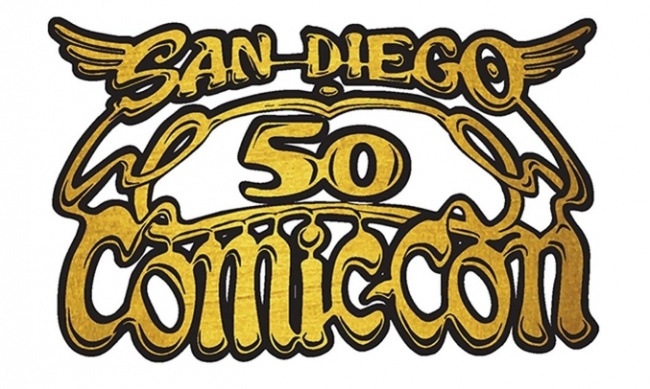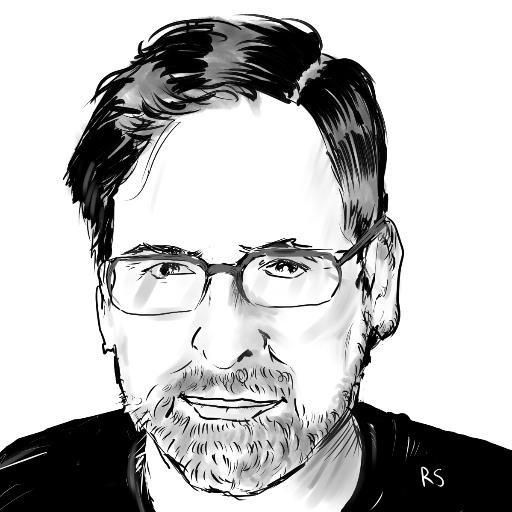After the longest week of the year, the 50th edition of San Diego Comic-Con is finally in the books, leaving hundreds of thousands of exhausted, mostly-satisfied fans staggering back into the cold light of reality. The show remains too huge to sum up in a sentence or an article. I found that even an entire book is not quite sufficient. But after a lot of doubt and grumblings leading up to this year’s Con, it seems clear that the show has retained its relevance and its ability to overwhelm, even as the salience of comic and genre content has reached super-saturation levels in the outside culture.
The biggest entertainment story of the weekend seems to be Marvel Studio’s massive show of force in Hall H on Saturday afternoon, laying out the blueprint to the next phase of the MCU with a star-studded panel. Tom Cruise also dropped in unannounced on Friday, spotted wandering the exhibit hall before showing up on stage to promote the Top Gun sequel. A few folks on Facebook reported seeing Hamilton star Lin Manuel Miranda in costume at the show as well. Panels on The Boys, The Expanse and Witcher also generated a lot of buzz, suggesting that SDCC remains a key battlefield in the Streaming Wars, even if feature films don’t play as big a role in the programming as they used to.
That kind of random star power harkens back to the mid-aughts era when Comic-Con first blew up, and shows that Comic-Con still has the capacity to surprise us, even when sky-high expectations are baked in and the capacity for new growth is capped by the facility.
Changes on the Show Floor. This year’s show also featured huge changes in the exhibit hall, in what appeared to be a cascade effect of DC’s retreat from its traditional spot in the center of the floor to the back corner, smothered under the awning of the massive, forbidding WarnerMedia complex. Especially with the recent shuttering of MAD and Vertigo, I don’t think WarnerMedia and its new owner AT&T could have sent a stronger signal about its priorities with a 60-foot flashing sign over the hall saying "Publishing is an afterthought."
The timing of that particular move was made poignant by Friday’s induction into the Eisner Hall of Fame of Jenette Kahn and Paul Levitz, the executive team that kept DC relevant through a series of far-sighted decisions about content, talent development and creator rights in an era when Marvel dominated sales charts. The legacy they built at DC and the relative autonomy that the division retained from corporate oversight now seem like quaint relics of the distant past.
DC’s place at the center of the publisher section was taken by Image, whose massive booth presented its butt-side to the main city-side doors. The company might want to consider a different booth design or orientation if it’s going to keep that spot for future shows. Everyone else shifted around a little, requiring more adjustment and reorientation for repeat attendees than we’ve seen in a while.
Foot traffic seemed heaviest on Thursday and parts of Friday, and exhibitors I spoke to said those were the better sales days.
Reliving past glories. This year’s Con also stacked the deck with comics-based programming and historical retrospectives. SDCC invited a boatload of old-timers to reminisce about the convention through the various decades of its history, and hosted a couple of parties to celebrate its legacy. At an invitation-only anniversary party on Thursday evening, San Diego mayor Kevin Faulconer and other local political heavyweights turned up to pay homage to the city’s most visible cultural event, a reversal from the neglect and chagrin the Con and its attendees dealt with from locals in decades’ past.
Even the convention’s reclusive leadership team took the stage for a couple of fascinating panels looking at the inner workings of the show. In case it’s not obvious how much planning and logistics goes into staging Comic-Con every year, these panels put the spotlight on the staff departments and vendors responsible for the convention center setup, licensing and planning of off-site activations, catering, security, line-management, shuttles and more. If there were any doubt about how much hard work and hard-won knowledge goes in to making Comic-Con look relatively easy and seamless for attendees, these discussions dispelled it. And for the inevitable screw-ups and complains that bedevil the show at the margins every year, it’s a reminder of how much stuff that could go wrong that almost never does.
Coping with loss. In another big change from Cons past, the traditional Comic-Con Talkback panel on Sunday afternoon was suspended in favor of an event honoring the memory of Talkback’s longtime host, Comic-Con President John Rogers, who passed away this past year (see "R.I.P. San Diego Comic-Con’s John Rogers"). The emotional tribute demonstrated that Rogers was not just a name at the top of the organization chart. He was the heart and soul of the leadership team and someone who stamped his analytical, practical, fiscally-conservative, spotlight-shy temperament on the entire organization. Several Comic-Con department heads tearfully referred to him as their "work dad" and underscored the massive void left by his untimely death at age 57.
Considering how fresh the wound still feels to many in the leadership, it’s clear that this year’s Con was organized under extraordinary pressure: not just because of the additional attention brought on by the milestone anniversary or the increasing competitive nature of the fan-con business, but because SDCC, now under the leadership of longtime board member and second-in-command Robin Donlan, had to attend to all the details of contracts, finances, negotiations with the hotels and city, and even the ongoing launch of the new Comic-Con Museum that Rogers had handled with such assurance and skill for nearly 35 years.
Still SAN DIEGO Comic-Con, at least for the time being. It also perhaps explains Comic-Con’s decision to re-up its arrangement to stay in San Diego through 2024, despite the fact that voters have not yet approved a measure to expand the convention center facility, which will be on the ballot in March, 2020. The issue of expansion came up many times over the weekend; it’s clear that the show has become restless within the limitations of capacity imposed by its venue. Creative efforts to move activities offsite, accommodate more or larger booths by constructing multi-tiered spaces on the show floor, and expanded panel programming, will only go so far if the Con can’t accommodate more attendees or make the mad scramble for hotel rooms a little bit less harrowing.
In the meantime, this year’s show demonstrated that the Con still has the ability to astound and innovate, if not actually grow in size. Old-timers and first-timers I spoke to left happy, their bags groaning with loot and their eyes glassy from exhaustion. Somewhere, John Rogers is smiling proudly at the celebration his team pulled off, even if he wasn’t there with them to pop the corks.
The opinions expressed in this column are solely those of the writer, and do not necessarily reflect the views of the editorial staff of ICv2.com.
Rob Salkowitz (@robsalk) is the author of Comic-Con and the Business of Pop Culture.

Column by Rob Salkowitz
Posted by Rob Salkowitz on July 22, 2019 @ 11:52 pm CT



